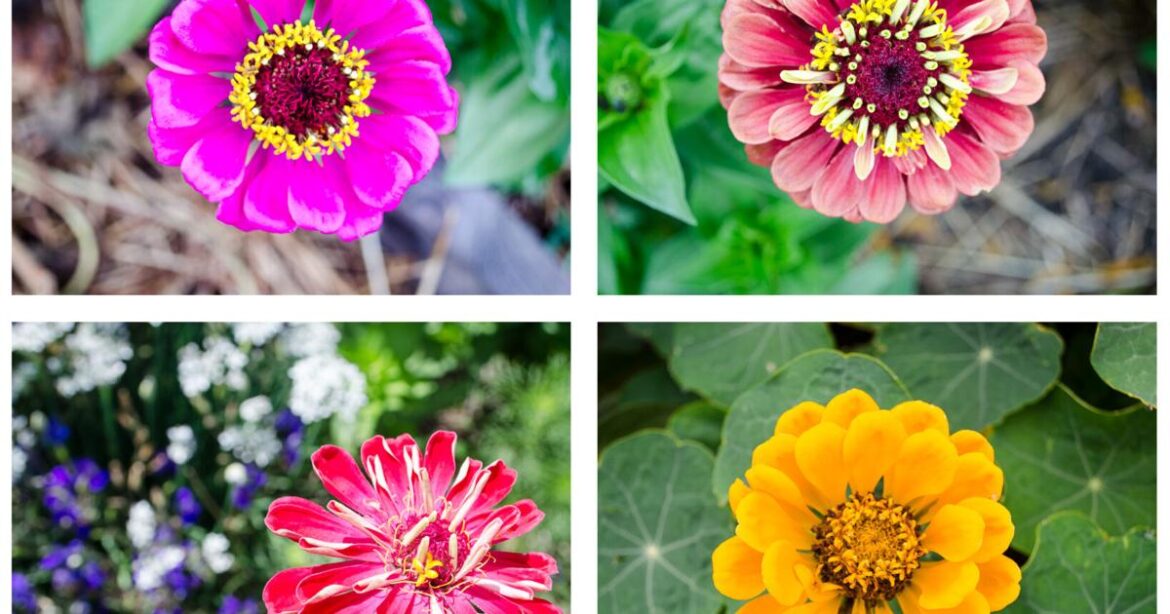“The Language of Flowers is indeed as old as the hills; yet it can never become old, for every Spring reproduces its characters anew.” — Robert Tyas, Floral Emblems of Thoughts, Feelings, and Sentiments (1875)
The Victorian language of flowers assigned feelings and emotions to various flowers. Most commonly, red roses represent love. Less well-known are zinnias as expressions of friendship, lasting affection and especially endurance as demonstrated by their vibrant blooms that thrive even in the harshest of conditions. If you are looking for plants with a reliable flower display, abundant blooms, little maintenance and pollinator interest, consider zinnias.
The genus zinnia (Zinnia sp.) is in the sunflower family (Asteraceae) and is composed of 17 species worldwide varying from only inches tall to 4 feet. The native range is the Southwestern U.S. to Central and South America. Most zinnias are grown as annuals, and fall within the species Z. elegans. There is a zinnia native to Colorado, Z. grandiflora, which is a perennial in our region. Countless varieties and hybrids offer a wide selection of flower colors and shapes. Zinnias are excellent cut flowers, known for their long vase life and ability to continue producing blooms even after being cut.
Zinnias are easily grown in any location with full sun and good soil drainage, and they are relatively maintenance free. Because they originated in arid regions, they love hot weather and are drought tolerant although they thrive on consistent watering. They readily grow from direct seeding early in the growing season making them economical also. Plantings should be fertilized at least twice during the growing season using a balanced granular or water-soluble 20-20-20 fertilizer or a slow-release fertilizer at the time of planting.
Zinnias have few insect pests, but aphids, spider mites and whiteflies might damage plants, especially during hot, dry weather.
Zinnias are excellent sources of pollen and nectar for many beneficial insects, so insecticides are not recommended. An insecticidal soap will control damaging mite and insect pests.
Deadhead (remove spent flowers) throughout the summer, to ensure an entire season of blooms. Allow each plant to grow into its natural side-branching form to shade out weeds.
To encourage pollinators, plant single-petaled varieties. The double-petaled flowers are showy, but the extra petal row(s) displaces stamens, reducing pollen and make access to nectar more difficult, reducing pollinator activity. However, swallowtail, monarch, and painted and American lady butterflies find double-petaled varieties attractive and frequently use them for landing pads.
Zinnias are a rewarding addition to any garden, including the vegetable garden where they provide a beautiful splash of color. No matter what type of zinnias you choose to grow or where you choose to grow them, you will be rewarded with a bold, colorful flower garden full of blooms to enjoy all summer long.
Submit gardening questions to csumg2@elpasoco.com or call 719-520-7684. The in-person help desk is open 9 a.m.-noon and 1-4 p.m. Mondays, Wednesdays and Thursdays. Visit elpaso.extension.colostate.edu and register for upcoming classes at epcextension.eventbrite.com.

